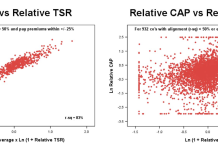Giovanni Caccavello from Open Banking Excellence (OBE) believes a tighter action plan for the EU Digital Finance strategy will promote prosperity across Europe
Fintech is one of the hottest sectors in the European Union (EU) right now. According to the latest statistics from CB Insights and industry body Innovate Finance, almost a fifth of unicorn companies created in the 27 Member States in the last decade are fintechs, while Germany, France, Sweden, and the Netherlands alone attracted more than $3.5 billion fintech investment last year.
With entrepreneurial and innovation ecosystems strengthening all around the EU, from Vilnius to Amsterdam, from Paris to Stockholm, European policymakers now need to prioritise the Union’s journey towards a faster digital transformation. They need to rapidly discuss, amend, and implement the communication on an EU-wide Digital Finance strategy first put forward by the European Commission in September 2020.
The new EU Digital Finance strategy
The journey towards this new Digital Finance strategy began in March 2018, when the Commission tabled an action plan on financial technology to enable the European financial sector to better make use of the rapid advances in new technologies that are transforming the industry and revolutionising the way people access financial services. As the EU bloc gradually emerges from the COVID-19 recession, the timescale of the Digital Finance strategy doesn’t seem fit for purpose. The pandemic created a ‘new normal’ for finance, with Open Banking-powered payments, embedded finance, crypto services, ‘buy-now-pay-later solutions, and cashless transactions finding more room to affirm themselves. Whilst chatting with Nigel Verdon recently, the Co-Founder and CEO of Railsbank expressed concerns about the speed that the EU is moving at. Verdon, who was instrumental in shaping the Kalifa Review, pointed out that the UK has moved ahead of the bloc.
“The UK is already starting to work on some of the Kalifa Review recommendations, just weeks after they were announced in February,” he said. “This includes the creation of a Centre for Finance, Innovation, and Technology to strengthen national coordination across the fintech ecosystem and a regulatory ‘scale box’ to provide additional support to growth stage fintechs. There are also planned amendments to UK listings rules to make the UK a more attractive location for IPOs, and tech visas to attract global talent and boost the fintech workforce. In comparison, the timetable set out by the Commission already looks too loose to move Europe forward at the same speed.”
Whilst the Commission can propose legislation on Digital Finance issues, these proposals can only be enacted when they are approved following the so-called “trilogue” negotiations with the European Parliament and the European Council. Recent history doesn’t bode well. PSD2 took around five years to move from proposal status (July 2013) to entry into force (January 2018). For GDPR the story is similar: the path from proposal (January 2012) to implementation (May 2018) took several years. At this stage, there are no indications that the same will happen with regards to the new legislative package proposed in September 2020, but the guidelines provided by the Commission make me anticipate a lengthy process ahead that risks putting Europe behind key competitor jurisdictions. For example, the Commission will launch the review of PSD2 by the end of the year, including an assessment of its scope. However, if PSD2 needs to be modernised and the upcoming Commission’s review certifies this, how long will it take until we see a fully implemented PSD3 across the EU and EEA region?
The EU really needs to move faster, not only for the highly innovative fintech start-ups to prosper but also for more traditional financial institutions and EU customers. Whilst the proposed Digital Finance strategy can enable Europe to move forward and to better integrate the 27 Member States’ financial markets, I worry the scheduled timetable risks slowing down the journey towards digital transformation. With a market size of around 450 million people, the potential for fintech to prosper is high. However, thus far, the ‘smaller’ US market is home to dozens more fintech unicorns.
Thus, a change of direction is not only needed but would be welcomed. The European fintech sector can strengthen and accelerate the recovery of the whole Union, helping European citizens and businesses dealing with the challenges that will arise in the post- COVID-19 world. Only a tighter action plan that also takes into account easier fixes, such as the correct enforcement of already existing laws like the regulation that calls for merchants to not discriminate against non-local IBANs, can enable the EU to remain up-to-date in an even more digital and technological financial world.
The InvestEU Programme & the economy in Europe
The InvestEU Programme gives the EU vital long-term funding, crowding in private investment, to support recovery and help build “a greener, more digital and more resilient European economy,” following the European Commission welcoming the European Parliament’s vote on 12th March 2021.
Paolo Gentiloni, Commissioner for Economy shared his thoughts about the InvestEU programme: “Whether one considers the green and digital transitions, our innovation capacity or our social model, it is clear that in the coming years we will need to do everything possible to boost investment in Europe. InvestEU will have an important role to play to that effort. By crowding in funding and aligning private investors with EU policy priorities, InvestEU is a cost-efficient way to maximise the impact of European taxpayers’ money.”
On the economy, Commissioner Gentiloni commented earlier this year that the pandemic has impacted several sectors of Europe’s economies. COVID-19 has had “disproportionate consequences on different sectors, with services hit harder than industry,” Gentiloni noted, giving a number of examples like transport. “For example, compared to January 2020, turnover in transport equipment manufacturing dropped around 80% in the second quarter of last year, but is expected to be around 20% above its pre-pandemic level by the end of 2021.”
One way ahead when it comes to securing public debt sustainability is “to support the recovery and thereby reduce the risk of scarring and economic divergence,” Commissioner Gentiloni goes on to detail. Also, it is important that “a stronger international role for the euro will flow naturally from a good implementation of the Recovery and Resilience Facility,” Commissioner Gentiloni notes.











